Get ready to test your reflexes, accuracy, and gaming prowess as you step into the shoes of a virtual hunter, ready to conquer the skies one duck at a time.
Hello to our happy readers and gamers. Today we shall look at the awesome shooting game which according to me was “007”.
This iconic game, designed by Gunpei Yokoi and Hiroshi Yamauchi, embodies Nintendo’s innovative spirit and laid the foundation for future gaming experiences. Armed with the NES Zapper, gamers aim to take down flying objects in a variety of settings. Hurray! you say? Right, it’s none other than the famous game “Duck Hunt”, a classic video game released by Nintendo in 1984, invites players to test their shooting skills and precision.
Duck Hunt’s simple yet engaging gameplay and memorable canine companion have etched it into the collective gaming memory. With its lasting charm, Duck Hunt remains a nostalgic favourite that continues to bring joy to players of all ages.”
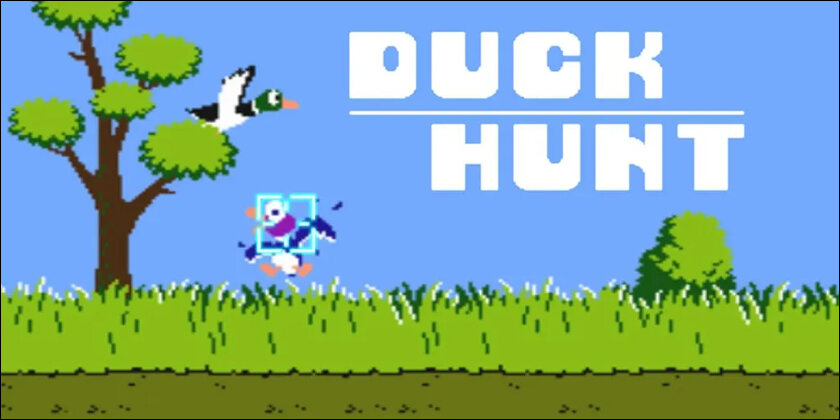
I used to obtain good scores by holding the wires pistol and precisely pointing at the bird on the screen and shooting it. Every youngster from the 1990s has heard of this well-known game. At that age, handling a pistol and firing made one feel like James Bond, even without the warning – “These stunts are performed by trained professionals, do not attempt this at home.”
We should be grateful to them for coming up with such a brilliant design in the early phases of the game business or Human Computer Interaction.Here is a look back at our creative journey.
Game Play:
“Duck Hunt” is a classic light gun shooting game for the Nintendo Entertainment System (NES) that challenges players to test their accuracy and reflexes. The game features two main modes: “Game A” and “Game B,” both of which involve shooting down ducks. The story begins with “Dog” (the only name they ever called him in real life) leaping into the grass to frighten the ducks. You were allowed three shots at a duck, and if you missed all three and it managed to run, it was called a miss.
In “Game A,” players are tasked with shooting ducks that fly across the screen in a variety of patterns and speeds. The goal is to shoot down a specific number of ducks in each round to progress to the next level. The difficulty increases as players advance, with faster and more erratic duck movements.
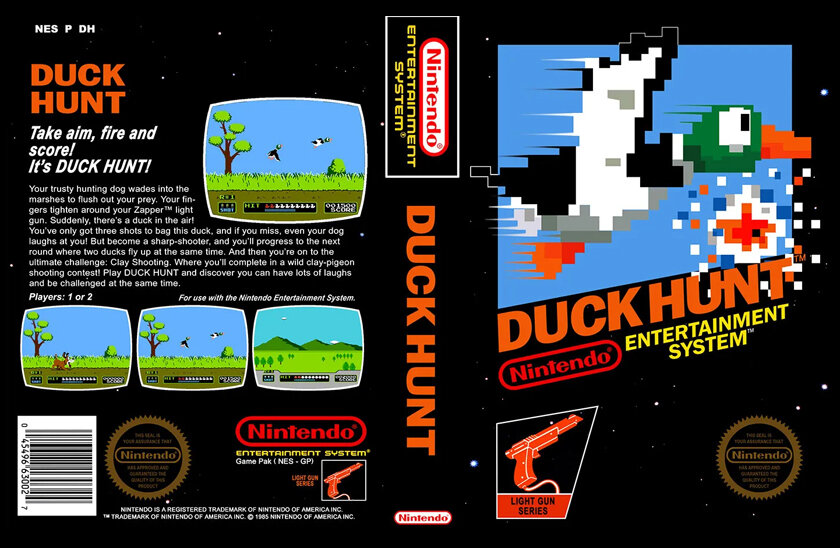
“Game B” offers a more challenging experience by introducing a second player-controlled duck alongside the original targets. Players must now distinguish between the two types of ducks and decide which one to shoot.
There comes another mode, “Game C” which is Clay shooting, another game by itself , which is a kind of training game.
The NES Zapper, a light gun accessory, is used to aim and shoot at the ducks on the screen. When the trigger is pulled, the screen briefly turns black, and the ducks’ positions are detected based on the light sensor in the accessory.
A unique aspect of “Duck Hunt” is the presence of a hunting dog that retrieves the fallen ducks. Depending on the player’s performance, the dog may either excitedly celebrate successful shots or mockingly laugh at missed shots, creating a memorable and humorous element to the game.
The round would end when ten ducks were shot or missed. Each successful shot was recorded as a red kill shot, and you had to achieve a certain score to advance to the following round.
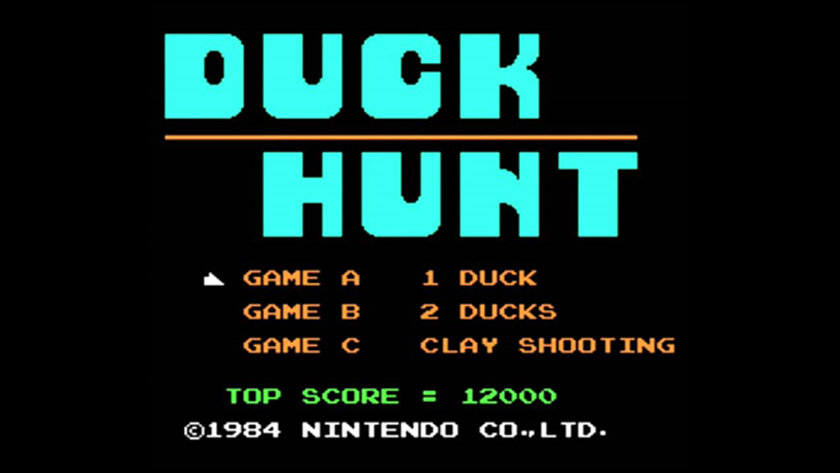
Duck Hunt was exciting since there was no established pattern and the ducks flew in random patterns, so you never knew what would happen.
Excellent Score Cheat: If you cheated like I did, you’d come up close to the screen and shoot them as they rose from the grass.
How does Duck Hunt Design work?
“Duck Hunt” features a straightforward yet engaging design that contributed to its popularity and enduring appeal. The game’s design elements include:
Gameplay Mechanics:
The core gameplay revolves around shooting ducks as they fly across the screen. The player uses the NES Zapper light gun to aim and shoot at the ducks. The game’s mechanics are easy to grasp, making it accessible to players of all ages.
Scoring System:
Players earn points for successfully shooting ducks. The scoring is based on the type of duck and the level of difficulty. Hitting ducks in succession without missing grants bonus points. The challenge lies in maintaining accuracy as the ducks become faster and more unpredictable.
Duck Behaviour:
Ducks move across the screen in various patterns and speeds, mimicking real hunting scenarios. This randomness keeps the gameplay fresh and requires players to adapt quickly.
Two-Player Mode:
“Game B” introduces a two-player mode where one player controls the ducks, adding a competitive element as players take turns shooting and evading.
Hunting Dog:
The iconic hunting dog reacts to the player’s performance. It enthusiastically retrieves ducks when shot and mockingly laughs when the player misses. This dynamic interaction adds humor and emotional engagement.
Aesthetic and Audio:
The game’s visual design is simple, featuring a blue sky and grassy ground. The shooting gallery backdrop emphasizes the hunting theme. The limited color palette and pixel art style are characteristic of the NES era. The game’s audio includes realistic duck sounds, gunshots, and the distinct barks and laughs of the hunting dog.
Progressive Difficulty:
As players advance through levels, the ducks’ speed and movement become more challenging. This gradual increase in difficulty maintains player engagement.
Limited Resources:
Players have limited ammunition, and missed shots result in a decrease in available bullets. This limitation adds an element of strategy and tension to the gameplay.
Replay Value:
The game’s simplicity and competitive nature encourage replayability as players strive to achieve higher scores and improve their accuracy.
Iconic Packaging:
The game was often bundled with the NES console in a package that included the NES Zapper, enhancing its accessibility and popularity.
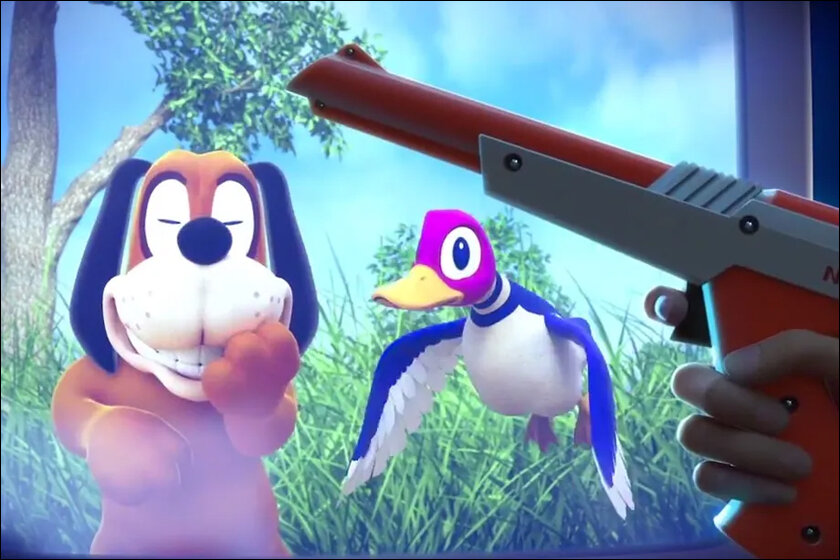
“Duck Hunt” design successfully combines intuitive mechanics, challenge, humor, and a competitive edge, making it an enduring classic that continues to resonate with gamers.
The Scoring pattern:
In “Duck Hunt,” players can earn points based on their accuracy and the type of ducks they successfully shoot down. The scoring pattern is as follows:
1. Duck Type: There are two types of ducks: regular ducks and bonus ducks. Regular ducks appear more frequently, while bonus ducks are rarer and smaller.
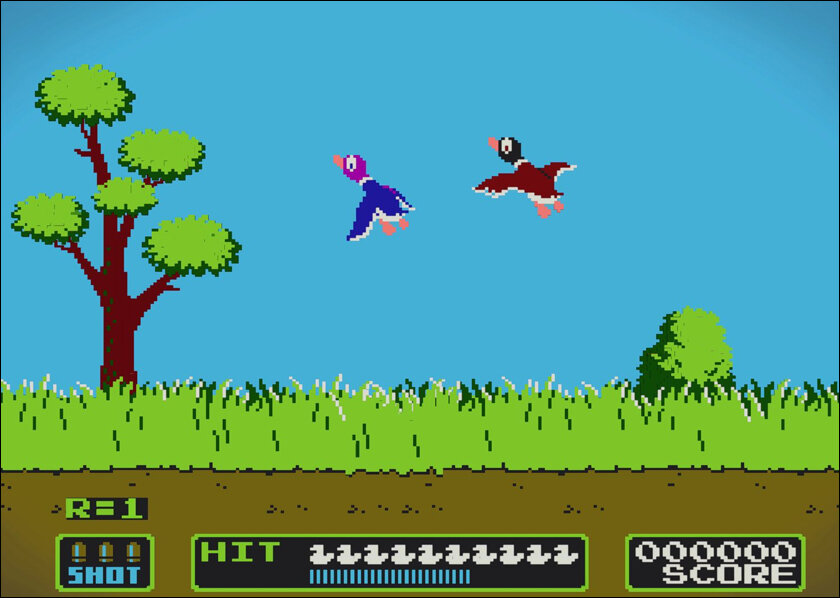
2. Accuracy: Players earn points for each duck they shoot down. The accuracy of their shot affects the points earned. Hitting a duck on the first shot grants more points than subsequent hits.
3. Streak Bonus: Successfully shooting consecutive ducks without missing results in a streak bonus. The more ducks shot in succession, the higher the bonus points awarded.
4. Round Bonus: After clearing a round by shooting the required number of ducks, players receive a round bonus based on their accuracy throughout that round.
5. Missed Shots Penalty: Missing a shot leads to a decrease in available bullets and a penalty in points. It’s crucial to maintain accuracy to maximize points.
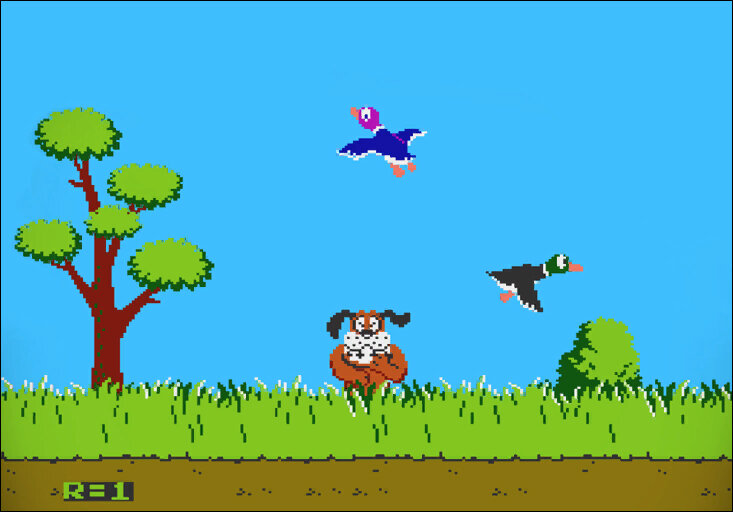
6. Bonus Round: Periodically, a bonus round featuring flying clay targets appears. Hitting these targets rewards extra points, with the possibility of achieving high scores.
7. Maximum Points: While the exact points earned vary depending on factors like duck type, accuracy, and streaks, the maximum achievable score for a single player in one round is 999,990 points.
The combination of precision shooting, streak bonuses, and round bonuses creates a strategic layer to the gameplay, as players aim to maximize their scores while adapting to the increasing difficulty. This scoring system adds depth to the “Duck Hunt” experience, encouraging players to refine their shooting skills and achieve impressive scores.
Once a duck has fallen on the ground, the dog will collect it with a smile and the duck will have an angry face. This was one of the delightful moments, especially when you are a kid.
If we miss the shot, the sky will turn peach, with the text “fly away”!. The dog also emits a humiliating laugh. As a kid we do want to prove it wrong by taking perfect shots in upcoming ones. After each round, a plain screen with the message “Perfect” and a level completion score is displayed!
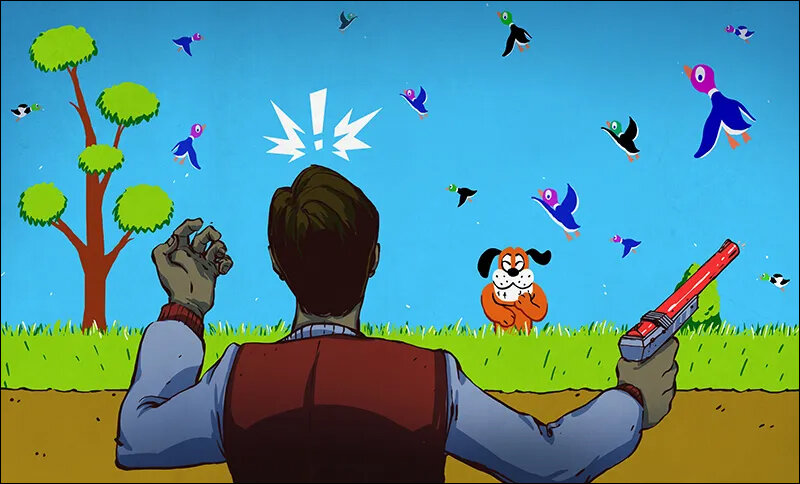
“Duck Hunt” remains a timeless testament to the joy of classic gaming. Its simple yet addictive gameplay, coupled with the iconic hunting dog’s reactions and the thrill of shooting down ducks, left an indelible mark on gaming history.
The game’s design, scoring mechanics, and competitive spirit continue to captivate players young and old. So, whether you’re a nostalgic gamer or a newcomer to the world of retro classics, it’s time to pick up your virtual gun, take aim, and experience the excitement of “Duck Hunt.”
Get ready to test your reflexes, accuracy, and gaming prowess as you step into the shoes of a virtual hunter, ready to conquer the skies one duck at a time.



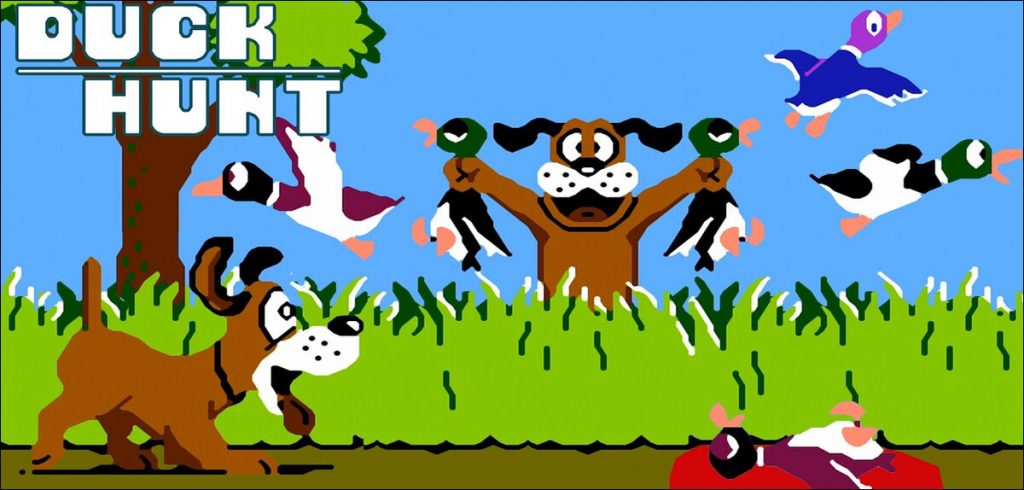
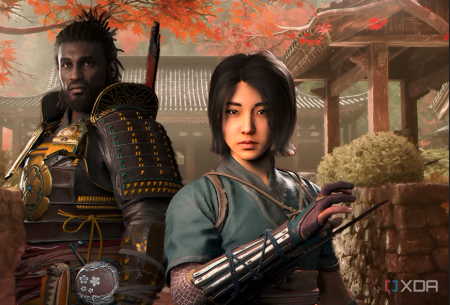
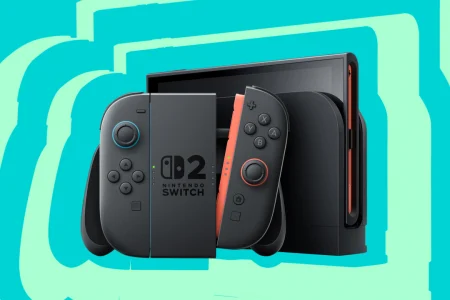




1 Comment
Excellent job 👍